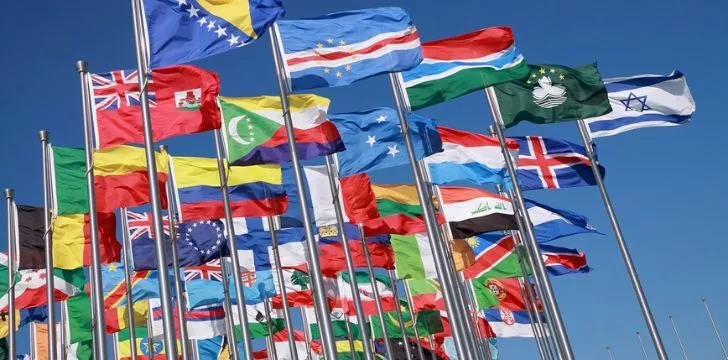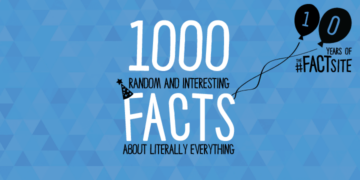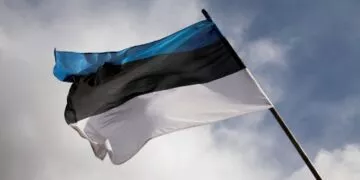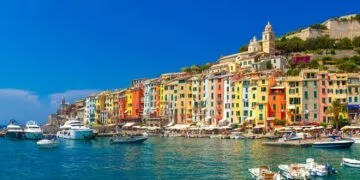You may not think that there is much to know about flags, other than they are used to identify countries. But they can be a lot more complex and interesting than we might think.
It is easy to look at a flag and appreciate its colors, shapes and patterns, but do you ever wonder why flags are made a certain way?
Here are 10 fantastic facts about the flags of the world that will leave you wanting to know more.
Nepal has the only flag in the world that doesn’t have 4 sides.
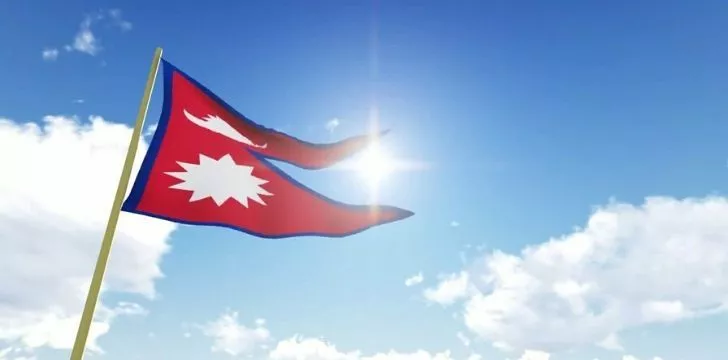
Did you know that the flag of Nepal is not a square or rectangle? This makes it the only flag in the world that is not quadrilateral.
The flag consists of two triangular shapes, often referred to as a pennon or pennant.
These are stacked on top of each other to form the flag. It was officially made the flag of Nepal in 1962.
The flag has a crimson red background which represents bravery and a blue band outlining the flag which symbolizes peace.
There are two symbols, one in each triangle, of a sun and moon crescent.
There are only two square shaped flags in the world.
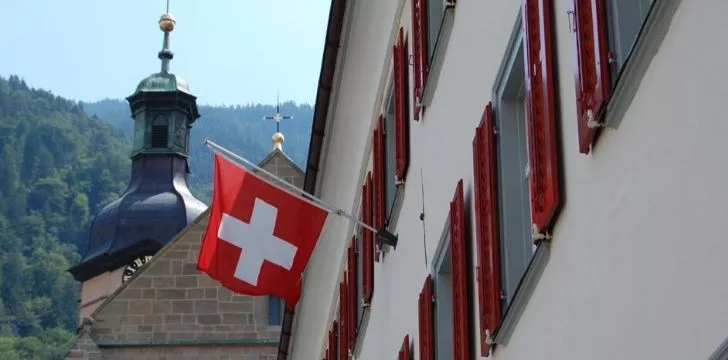
That’s right; out of the 193 sovereign flags of the world 190 are rectangular, only three are different.
One of three is the flag of Nepal as mentioned above with its triangular shapes, but the other two are that of Switzerland and the Vatican City.
Firstly not everyone would think that Vatican City is its own country, but it is in fact the smallest recognized country in the world.
The flag that is used for the Vatican City was adopted on June 7, 1929.
It is one of two square-shaped flags of the world and is half yellow or gold and half white.
On the white segment situated on the right-hand side of the flag, there is the Vatican crest.
The second square flag of the world is the flag of Switzerland, which is often confused with the medical flag used by the Red Cross.
It is a red square with a white cross in the middle. This flag has been used by Switzerland since 1889.
The flag stands for freedom and honor, the white cross represents Christianity and the red background symbolizes the blood lost to uphold their faith.
Symbols used on flags normally have a specific meaning.
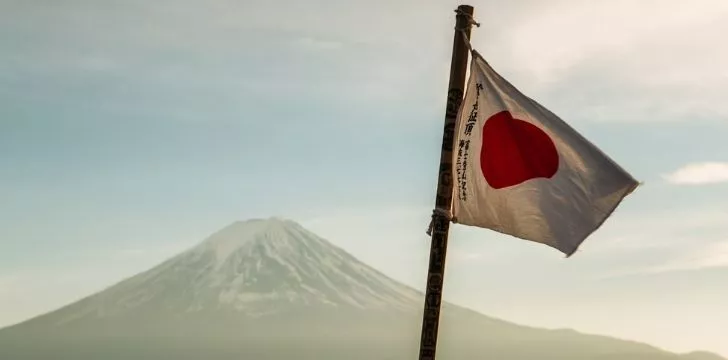
There are many universal symbols that are used across flags.
Not every flag has one but the ones that do will normally show any of the following; sun, moon, stars, cross, triangles, and squares.
Some of these symbols have important meanings to each country.
To give an example, Japan is known as the “Land of the rising sun”, and therefore they have a circular shape in the middle of their flag which represents the sun.
The Star and Moon Crescent
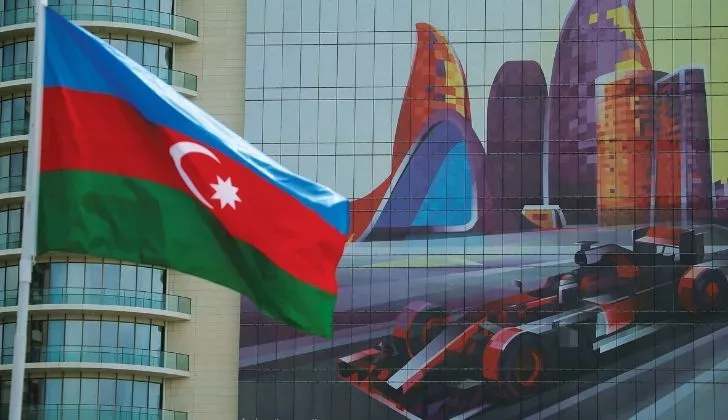
As a symbol on flags, it was first used by the Ottoman Empire, but it is now used by many Islamic countries, such as Azerbaijan, Turkey, Tunisia, and Malaysia.
The star and moon crescent is a recognized symbol that represents Islam; so many countries that follow this religion tend to use this on their flag.
The Cross
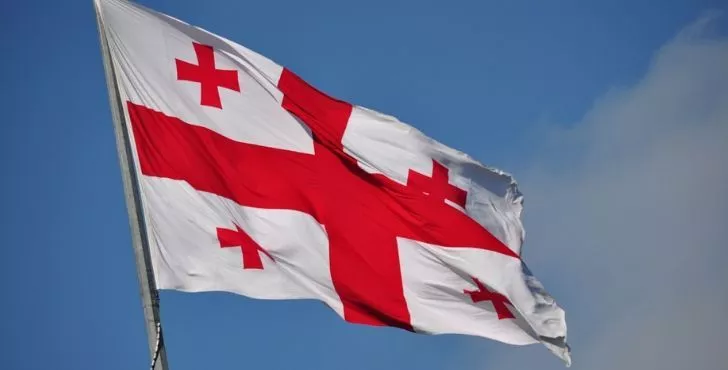
This appears on many flags and often links back to religion, to represent Christianity.
This can be seen on the flag for England, Georgia (Country), Norway, Sweden, and Denmark.
There is also the Nordic Cross, which is found on all Scandinavian flags, which also represents Christianity.
There are other symbols used to represent Christianity, but the cross is the most commonly used.
Animals
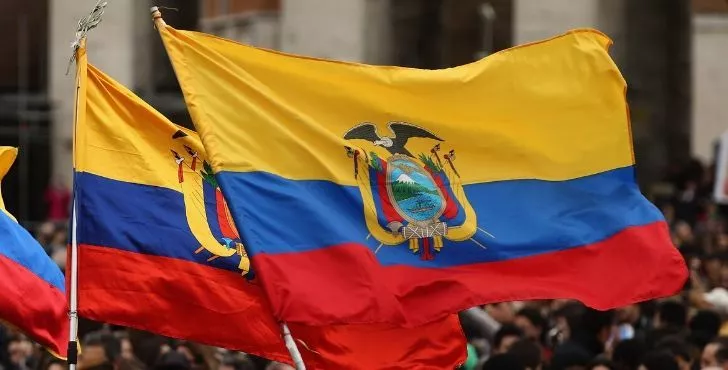
Some countries will use their national bird on their flags to reflect the countries heritage, like the flag of Ecuador which has a bird of the Andes called a Condor.
Other countries will use fierce animals such as lions to represent courage and strength.
There are also countries that use fictional animals too, like the flag of Wales, which has a dragon on it, and the flag of Albania which has a double-headed eagle on it.
The colors used for flags often ties into the history of the country.
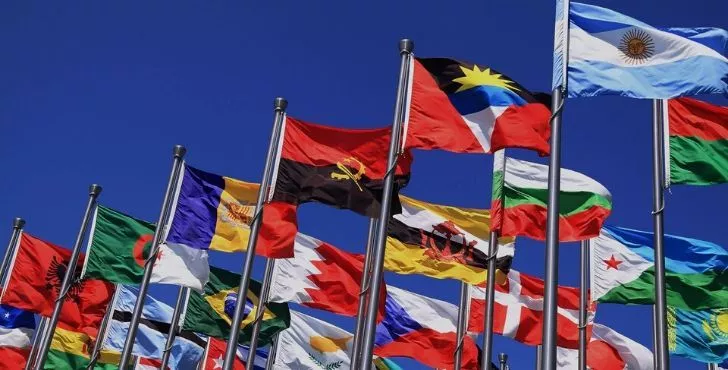
Most of the flags of the world use similar colors, those often being the primary colors, red, blue, and yellow, but there are some unique ones too.
Here are some meanings of what the most frequently used colors can represent in flags.
Red
Red can be associated with bad things, and that is often what it represents in flags.
Portugal uses red to represent the blood lost in battle to keep their country, whilst Morocco uses red to represent the bravery and strength of the people of the country.
They both suggest that the people have suffered throughout history so this is important for them to display on their flag.
Blue
Some of you may think that blue would represent the sky or the ocean on flags.
This can sometimes be the case but the use of blue can also have a deeper meaning and symbolize freedom and peace.
Yellow or Gold
For many years yellow or gold has been used to represent wealth and energy as this can be related to the sun.
Green
In most flags, green represents the rich nature of a country or its agriculture, although it can also be used to symbolize hope and youthfulness.
Black
This isn’t as commonly used, but when it is, it can be used to symbolize ethnic heritage, the defeat of enemies, or the determination of a country. It can also be used to symbolize death and mourning.
Purple is the rarest color to be used on a flag.
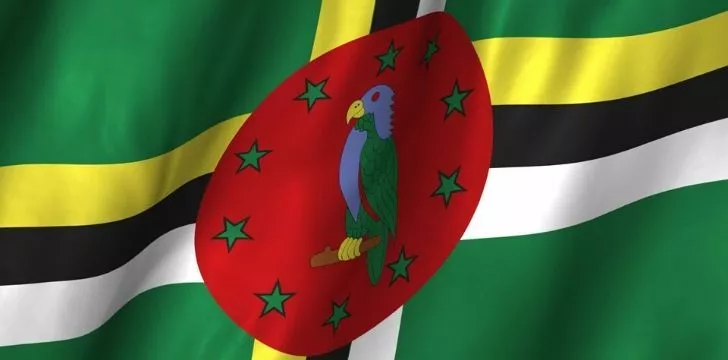
The most uncommon color that can be found on a flag is purple. It is only used on two flags of the world!
Purple often represents royalty or richness, so it might be surprising that it isn’t used on more flags today.
It can be found on the flag for Nicaragua and the flag of Dominica.
A reason why these are the only two countries that use the color is that purple dye, throughout history has always been expensive and difficult to get hold of.
Therefore other colors are more favorable.
Both flags were not made until the late 1900s, meaning that access to dyes would have been a lot easier than hundreds of years ago when the majority of other flags were designed.
This meant that both countries could use the color for a smaller cost and less work.
The flag of Belize has the most colors of any flag in the world.
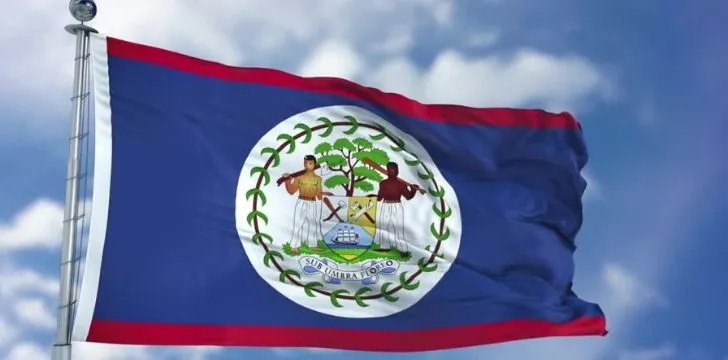
There are lots of flags with complex designs that involve lots of colors and it could be argued that there are so many colorful flags that it is difficult to say exactly which is most colorful.
However, the flag of Belize has 12 colors in total, making it the flag with the most colors.
The flag is blue, with a white circle in the middle which contains a crest, and there are red bands across the top and bottom of the flag.
The crest in the center depicts two humans holding tools, either side of a coat of arms.
There is a tree in the background, a floral design, and a banner with text. The flag was adopted on September 21, 1981.
Denmark has the oldest flag in the world.
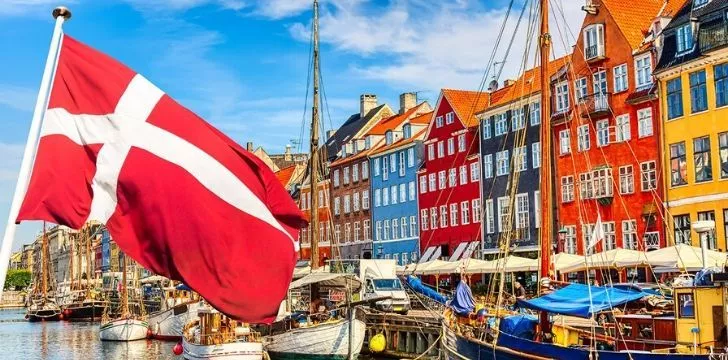
Flags have been used for hundreds of years but are always changing as countries develop.
However, the most consistently used country flag in the world is the flag of Denmark.
The red background with a single white stripe through the middle horizontally was first used in 1625 and is still the same today.
The design itself however was created in 1219. In Denmark, it is known as the Dannebrog, which translates to “Danish Cloth”.
South Sudan has the newest flag in the world.
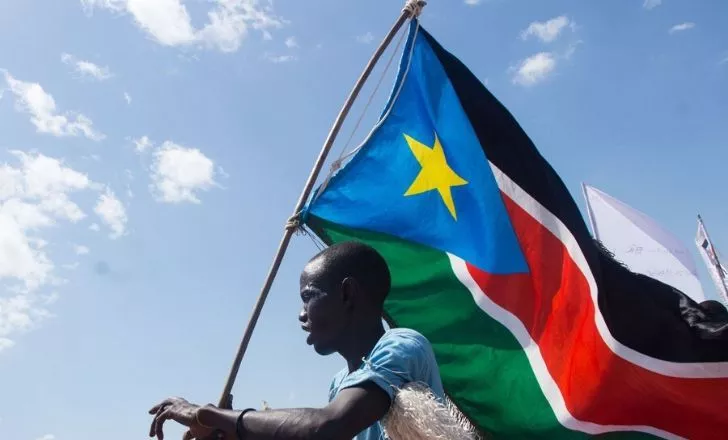
The newest flag in the world is the flag of South Sudan. It was adopted on July 9, 2010.
It was made after the end of their second civil war; however, the flag was designed in 2005 but was not made official until South Sudan gained independence in 2011.
The flag is made up of green, red, black, blue, and a yellow star symbol. The flag has three horizontal stripes, a blue triangle on the left-hand side with a yellow star in the middle.
For South Sudan, the red represents the bloodshed for their country to gain independence, the green represents nature and the countries natural wealth from the land and the black represents the people.
The blue is a symbol of the Nile River and the yellow star that sits in it represents unity.
There are white stripes between each color and these represent peace.
There are three different types of flag groups.
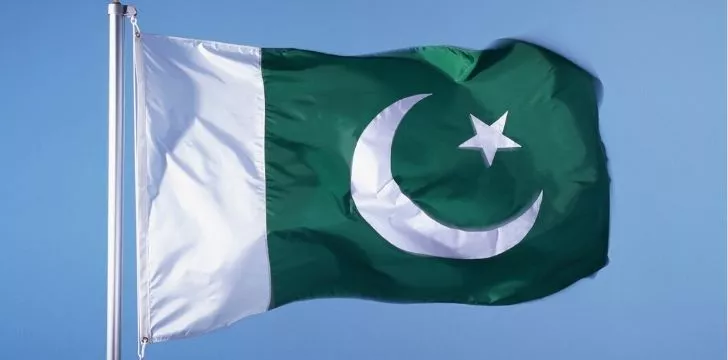
You may think that every flag is unique to its country, and generally, they are but there are some consistent patterns and colors that we can see within linking countries.
As we mentioned before countries that are Islamic will often use the Star and Moon Crescent to represent their religious beliefs but there are many more links like these throughout the world.
There are 3 main categories that are used to group countries that use the same colors in their flags.
Pan-Slavic Colors
These are the country flags that use red, white, and blue and are situated in Eastern Europe.
They once were united by the Soviet Union, but since gaining independence they have created their own flags using the same colors.
These countries include Croatia, Czechia, Russia, Serbia, Slovakia, and Slovenia.
Pan-African Colors
The country flags in this category use only red, yellow, and green and are all African based.
The countries in this category are Benin, Cameroon, Republic of Congo, Ethiopia, Ghana, Guinea, Guyana, Mali, Mozambique, Senegal, Togo, Zambia, and Zimbabwe.
Pan-Arab Colors
This category is made up of flags that use only white, red, green, and black in their flags.
Typically these countries are based in the Middle East and they are Iraq, Jordan, Kuwait, Sudan, Syria, United Arab Emirates, and Western Sahara.
There are 4 flags in the world that feature firearms.
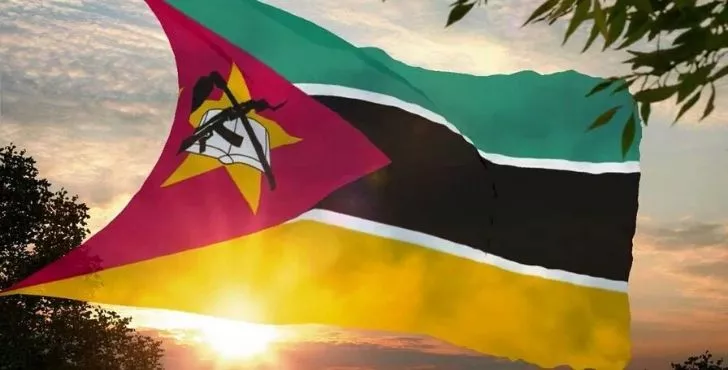
You may look at flags and think they represent the history of a country through color choice, symbols, and shapes.
But there are some flags that use firearms to symbolize the war or fights they have been through before finding peace.
Many will have items such as axes, arrows, cannons, swords, daggers, shields, spears, etc. in their emblems or crests, but only 4 have firearms.
Mozambique
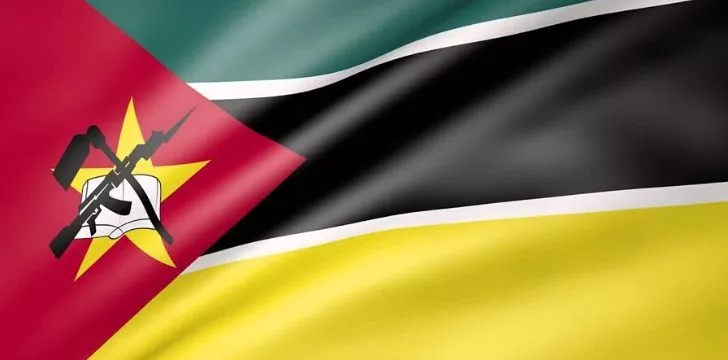
The flag of Mozambique depicts an AK-47 crossed with a farming mattock on top of a book.
Mozambique’s flag was adopted on May 1, 1983, and the use of the rifle stands for the country’s defense and vigilance.
Guatemala
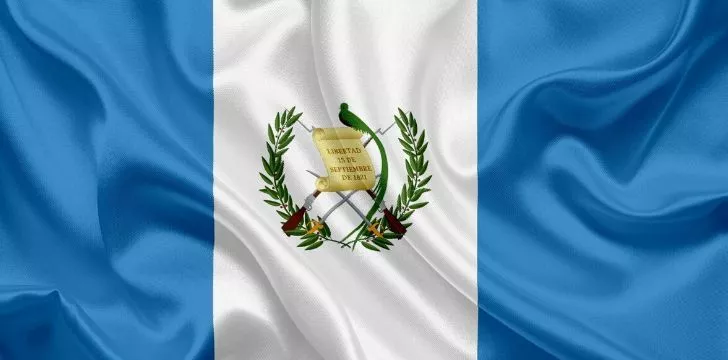
The flag of Guatemala depicts two crossed rifles behind a scroll, which for them represents their willingness to defend themselves as a country.
Guatemala’s flag was adopted in 1871.
Haiti
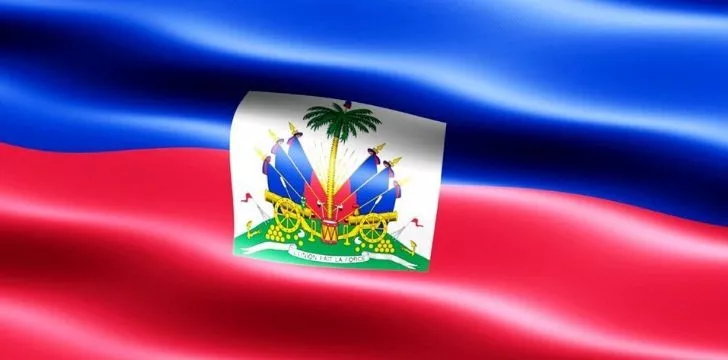
The representation of firearms on the flag of Haiti is much different from Mozambique and Guatemala.
Rather than the riffles being crossed, they are presented as a trophy on top of a green hill.
This symbolizes their independence and they have used this flag since February 26, 1986.
Bolivia
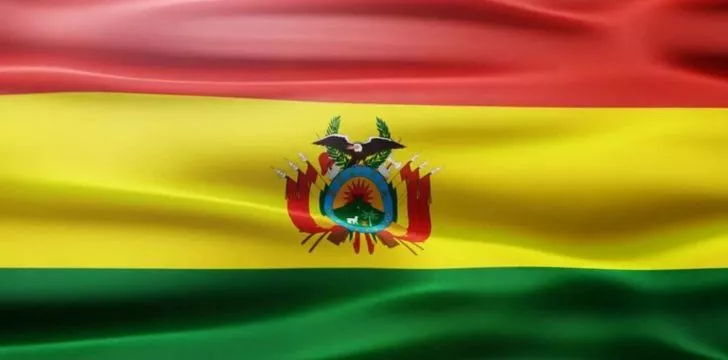
Finally, there is Bolivia, which subtly has two crossed firearms in the background of the coat of arms.
It shows muskets crossed, which similar to Guatemala, represents the countries willingness to defend itself.
The flag was originally adopted in 1851
As you can see there are so many parts that make up a flag, the choice of color to represent the history of the country, the use of crests, coat of arms or emblems and even the shape.
So now you have more understanding of the flags of the world, why not look at the history of your flag and where it came from!

